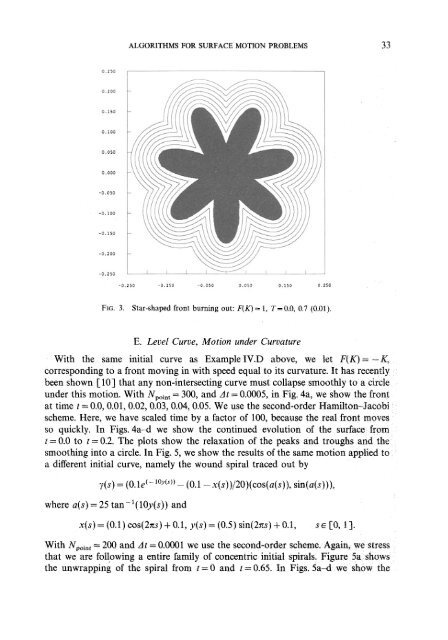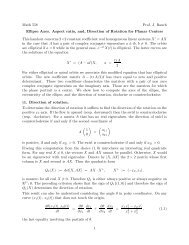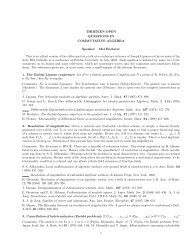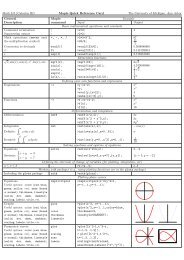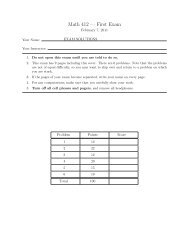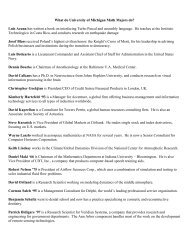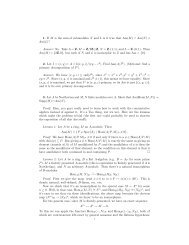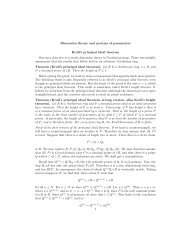Fronts Propagating with Curvature- Dependent Speed: Algorithms ...
Fronts Propagating with Curvature- Dependent Speed: Algorithms ...
Fronts Propagating with Curvature- Dependent Speed: Algorithms ...
You also want an ePaper? Increase the reach of your titles
YUMPU automatically turns print PDFs into web optimized ePapers that Google loves.
ALGORITHMS FOR SURFACE MOTION PROBLEMS 33<br />
FIG. 3. Star-shaped front burning out: F(K)= 1, T=O.O, 0.7 (0.01).<br />
E. Level Curve, Motion under <strong>Curvature</strong><br />
With the same initial curve as Example IV. above, we let F(K) = -K,<br />
corresponding to a front moving in <strong>with</strong> speed equ to its curvature. It has recently<br />
been shown [lo] that any non-intersecting curve must collapse smoothly to a circle<br />
under this motion. With Npoint = 300, and At = 0.0005, in Fig. 4a, we show the front<br />
at time t = 0.0, 0.01, 0.02,0.03,0.04,0.05. We use the second-order Hamilton-Iacobi<br />
scheme. Here, we have scaled time by a factor of 100, because the real front moves<br />
so quickly. In Figs. 4a-d we show the continued evolution of the surface fr<br />
t = 0.0 to t = 0.2. The plots show the relaxation of the peaks and troughs and<br />
smoothing into a circle. In Fig. 5, we show the results of the same motion applied to<br />
a different initial curve, namely the wound spiral traced out by<br />
y(s) = (O.le’-‘oy(““- (0.1 - x(s))/20)(cos(a(s)), sin(+))),<br />
where a(s) = 25 tan-l( lOy(s)) and<br />
x(s) = (0.1) cos(27rs) + 0.1, y(s) = (0.5) sin(27rs) + 0.1, SE [O, 1-J<br />
With Npoint = 200 and At = 0.0001 we use the second-order scheme. Again, we stress<br />
that we are following a entire family of concentric initial spirals. Figure 5a shows<br />
the unwrapping of the spiral from t = 0 and t = 0.65, In Figs. 5a-d we show the


